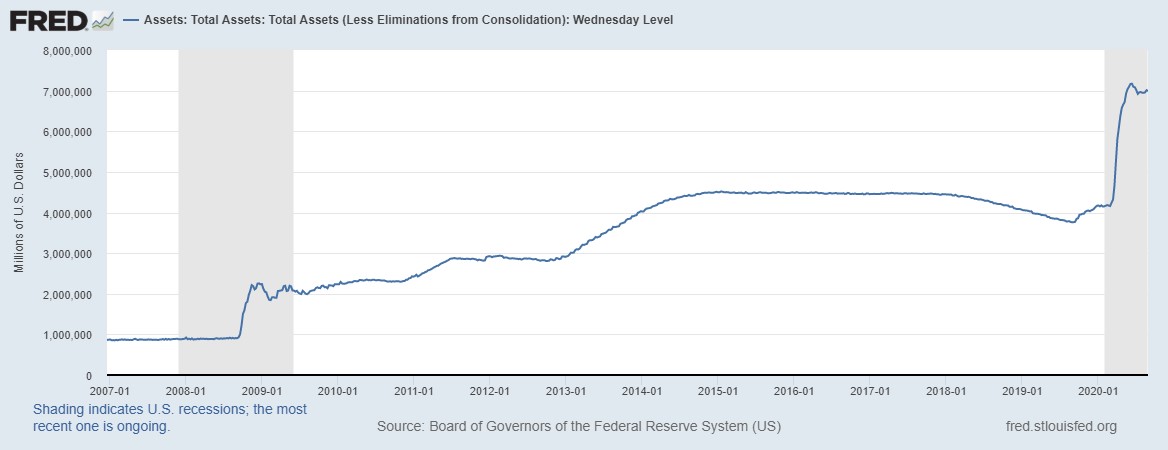This was always going to be a wild one.
Indeed, in the beginning of the year 2020, Martin Weiss wrote of a Bitcoin bounce because of what appeared then to be a brewing World War III concentrated in the Middle East.
And Juan Villaverde and Bruce Ng were talking about the implications of Bitcoin’s third “halving,” which has come and gone following much the same pattern so far as the first two.
When Martin wrote on Jan. 6, “I’m in a state of alarm and on high alert. If you’re not, you should be,” he was discussing how then-recent events in Iraq could lead to a conflict with Iran.
The novel coronavirus was still far out of mind for the investing public.
On Jan. 31, though, Juan and Bruce noted that COVID-19 fear was driving a flight of capital into crypto assets. And, now, Bitcoin has appreciated by more than 60% this year.
Yesterday, Juan and Bruce took a deeper dive into what’s happening:
Federal Reserve Chair Jerome Powell, from basically the very beginning of the COVID-19 crisis, has been using the phrase “no limit” to describe restraints on his institution’s lending capacity.
Just last week, a former Fed governor, Randy Kroszner, now a professor at the University of Chicago’s Booth School of Business, was on Bloomberg TV saying there’s “no limit” to the Fed’s balance sheet.
Indeed, the world’s most important central bank is acting as if that is the case: Its balance sheet has more than doubled since March.

Kroszner was on Bloomberg TV the day of Powell’s highly anticipated speech at the annual economic symposium in Jackson Hole, Wyo. That’s where Powell essentially said the central bank will keep interest rates at historically low levels even if inflation exceeds its 2% target.
That nuance is a key conclusion of the Fed’s review of its monetary policy framework, a two-year process, the thrust of which was only accelerated by the novel coronavirus. Here’s how Mohammed El-Erian described it for Bloomberg Opinion:
The result — a self-described evolution (as opposed to revolution) to the dual objectives of the Fed — includes a more “broad-based and inclusive goal” for maximum employment and the flexible use of “average inflation targeting,” which enables monetary policy to “aim to achieve inflation moderately above 2% for some time” following periods when inflation has been below that level.
Powell’s speech was hyped for days leading up to it by Fed-watchers hungry for more runes.
It’s much ado about nothing, as we tweeted beforehand, another way of saying “lower for longer.” Another way to interpret it, as Kroszner also said, is that the Fed doesn’t want to go “NIRP,” or “negative interest rate policy.”
There are two major problems, courtesy of David Rosenberg, with what the Fed’s doing.
First, inflation is running about 1.6%, based on the Fed’s favorite measuring stick.
Second, folks hurt by lackluster wage growth won’t like the consequences much.
A lot of heat was generated previewing the light Powell was supposed to shed on the course of monetary policy. Altogether — the hype and the speech — it’s more sound and more fury, signifying “debasement.”
And that’s good for crypto.
The only policy response is “easy money.”
That factor is creating conditions for what Martin calls “The Greatest Money Revolution of All Time,” the topic of his most recent presentation.
Think it’s been an interesting year? Well, you haven’t seen anything yet …
To see the full picture, watch the presentation here.
Best wishes,
David Dittman
